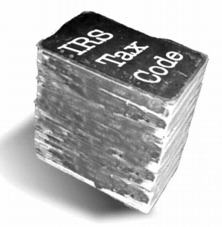While the tax code sometimes seems like a foreign language, understanding it can help you make informed decisions. The good news is that you probably know more tax code sections than you think. Here are three you may be able to benefit from as you review your 2016 tax planning.

- Section 179. Section 179 is shorthand for an Internal Revenue Code section titled "Election to expense certain depreciable business assets." Essentially a very accelerated form of depreciation, Section 179 lets you write off the cost of business equipment in the year you place it in service instead of having to depreciate the asset over a specified useful life. For 2016, you can elect to deduct up to $500,000 of the cost of assets purchased, as long as the total cost of the assets you purchase and place in service during the year is less than $2,010,000. Your deduction is also limited by your taxable income for the year.
- Section 529. Section 529 plans provide a tax-advantaged way to save for higher education expenses, and take two forms: prepaid plans and savings plans. With a prepaid plan, you pay for tomorrow's tuition costs at today's rates. With a savings plan, you put money in an investment account and the account grows tax-free until you make withdrawals to pay for higher education. The withdrawals are also tax-free as long as the expenses you pay meet the tax code definition of "qualified higher education expenses," such as tuition, books, and certain computer expenses.
- Section 1031. You're probably familiar with Section 1031 in the form of the expression "like-kind exchange." An exchange of similar business or investment properties that meets the requirements of Section 1031 allows you to postpone the federal income tax on gain from the transaction. Keep in mind the tax is postponed, or deferred, not eliminated. You'll still need to track your basis in property you acquire in an exchange.
Do you have additional questions about tax rules or need help with tax planning? Contact us for answers. We specialize in helping small businesses and individuals take advantage of tax savings opportunities.

